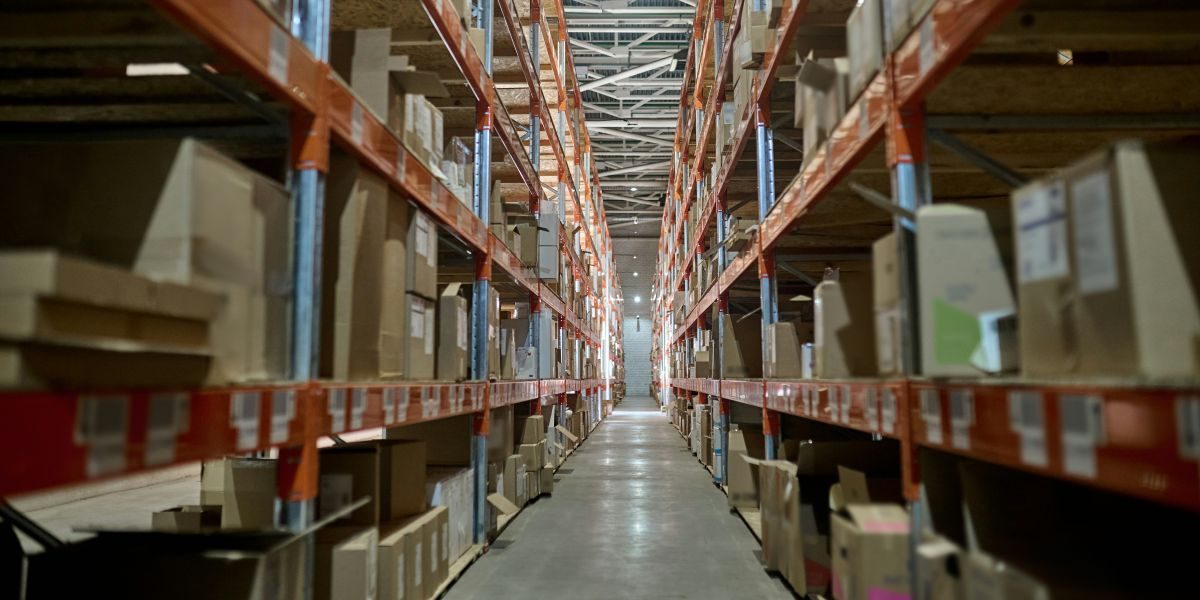By: Chris Gallagher
From healthcare and logistics to e-commerce and manufacturing, automation has revolutionized industries. The warehouse industry is no exception. Consumers expect faster delivery and error-free order fulfillment, and this expectation will continue to rise.
Businesses are naturally turning to advanced technology to optimize operations, reduce costs, and maintain their competitive edge. Warehouses are no longer simply storage spaces—they have become dynamic hubs of real-time inventory management, predictive analytics, and intelligent material handling.
Why Automation
The second goods arrive at a warehouse, their barcodes or RFID tags are scanned. From there, the goods travel through a complex process involving retrieval, packaging, and shipping. None of these complex processes would be efficient without automation.
Automation is designed to enhance accuracy and speed while helping businesses streamline workflows and shift focus toward strategic growth rather than reactive solutions. This aims to enhance the customer experience, help companies expand their product lines, and optimize supply chain management. Automated solutions are no longer a luxury but necessary for companies aiming to meet demands while solving operational and logistical bottlenecks.
As technology inevitably marches down the road of progress, warehouse automation will likely incorporate even more sophisticated AI models, machine learning-driven logistics, and enhanced robotics, further optimizing supply chains and setting new standards for efficiency in warehouse material handling.
What is Automated Material Handling and How Does It Work?
AMH uses technology systems and equipment to move, sort, organize, and store materials. It is usually used in warehouses, manufacturing plants, and distribution centers.
When goods arrive, their barcodes or RFID tags are scanned, and the product information is logged into a warehouse management system (WMS). The goods are then loaded onto AMH systems like conveyors or Automated Guided Vehicles (AGVs), which transport them to their storage spots—all without human intervention. Then, other AMH systems like Robotic arms or Automated Storage and Retrieval Systems (AS/RS) place those goods neatly on shelves.
When an order comes in, the process reverses. Robotic arms or AS/RS grab the correct items and send them down the conveyor to the picking stations. Workers check the products against the WMS for accuracy, then pass them along to be palletized and ready for shipping.
Warehouse automation frees businesses to focus on bigger goals, such as improving customer experiences, expanding product lines, and boosting overall efficiency.
Three key technologies keep AMH running smoothly:
- Robotics handle the heavy lifting, precision picking, and placement.
- AI analyzes all the data to guide business decisions on maintenance, inventory, supply chain management, etc.
- IoT helps the WMS monitor every piece of equipment, so you always have eyes on the entire process.
Key Components of Automated Material Handling Systems
The key components of automated material handling systems can be categorized into four based on their functions. They include:
- Detection & Data Collection
Automated material handling systems use sensors, barcode scanners, RFID tags, cameras, and other IoT devices to track the presence, position, and movement of goods in the warehouse.
- Motion Control & Execution
AMH systems use actuators to convert control signals to physical movement. This device helps equipment like Robotic Arms, Conveyors, AGVs, and Autonomous Mobile Robots (AMRs) to transport materials along predefined paths and perform tasks like picking, sorting, packing, etc.
- Coordination & Decision-Making
This is the software section of AMH systems. It includes controllers, software systems, and Warehouse Management Systems (WMS). They receive inputs through programs or commands, and send signals to the other AMH systems. They also oversee product tracking, carry out predictive analysis, manage inventory, etc.
- Material Handling & Storage
This category includes the AS/RS and the sortation systems. They automatically store and retrieve inventory and direct warehouse goods to the correct locations using conveyors and other routing equipment.
Types of Automated Material Handling Systems
Automated Material Handling systems can be split into two categories:
Fixed Automation
Fixed AMH equipment is built to handle repetitive, high-volume tasks with precision and consistency. These systems create a standardized process that produces consistent results, making them perfect for mass production.
They’re low-maintenance and don’t require reprogramming often, but changing their setup is tough and costly once installed. Examples of fixed AMH systems include conveyor systems, AGVs, robotic arms for assembly lines, automated packaging, and sorting systems.
Flexible Automation
Flexible, or “programmable,” AMH systems are built to handle a variety of tasks and can quickly switch between jobs or adjust to different workflows. They often need reconfiguration and are commonly used in dynamic environments such as e-commerce and distribution centers. Examples include Autonomous Mobile Robots (AMRs), adjustable conveyor systems, shuttle system, automated palletizers, Automated Storage and Retrieval Systems (AS/RS), goods-to-person systems.
Examples of Automated Material Handling Equipment
Here are examples of the most common equipment that make up an AMH system.
Conveyor systems
They move goods from one spot to another with belts, rollers, and chains, and can be customized for different product sizes and weights. They’re perfect for assembly lines, packaging, or any environment that handles a steady flow of goods. Companies usually integrate them with sortation systems and Automated Storage and Retrieval Systems (AS/RS).
Automated guided vehicles (AGVs)
AGVs are mobile robots that transport materials around a warehouse. They move on wires, magnetic strips, or use lasers for navigation. They are ideal for repetitive, point-to-point transport tasks like moving goods from storage to palletizing areas. They work well in environments where throughput is low to moderate and are a great alternative to conveyors.
Robotic picking systems
They use vision systems and grippers to pick and place items precisely. They can also be programmed to handle a variety of tasks quickly and accurately. Robotic picking systems them great for order fulfillment centers where reducing manual labor is a priority.
Sortation systems
They sort items by size, weight, or destination using conveyors, diverters, trays, and belts. Sortation systems play an essential role in distribution centers and e-commerce fulfillment environments.
Palletizing and de-palletizing robots
Palletizing robots stack goods onto pallets in set patterns to maximize space and accuracy, while de-palletizers unload products from pallets and place them for further handling or storage. These tools are perfect for the manufacturing and distribution sectors, especially when dealing with standardized products.
Automated storage and retrieval systems (AS/RS)
AS/RS systems retrieve and store items on warehouse shelves or crates. Whether vertical lift modules (VLMs) or horizontal carousels, these systems are excellent for maximizing space and boosting picking efficiency. Companies best use AS/RS systems in high-volume warehouses or places with limited space and labor challenges.
Factors to Consider Before Implementing Automated Material Handling Systems
To successfully implement an automated material handling system, you need to take a structured approach. Here’s a step-by-step guide to help you get it right:
- Needs assessment:
Start by identifying areas in your warehouse that could use a little automation love, like bottlenecks, accuracy issues, or high labor costs. Then, set clear goals for what you want the AMH system to achieve.
- Evaluate current warehouse infrastructure:
Take a close look at your existing setup. This will help you understand how an AMH system will fit into your operations without creating new problems.
- Selection of technology
Now it’s time to explore the different types of AMH systems. Research the options, talk to vendors or consultants, and determine what fits your needs best. Pick a solution that meets your current needs but can also scale as your business grows.
- Integration with existing systems
Make sure your chosen system integrates well with your current warehouse management system (WMS) and other key software. Set up clear protocols for data exchange to keep everything in sync and avoid any mix-ups.
- Staff training and change management
Once the system is integrated, get your staff up to speed with a solid training program. The last thing you want is people staring at the new system, unsure of how to use it.
Creating Warehouse of the Future
Automated material handling systems help reduce the time required for goods to be transported to their intended destinations. This may contribute to more precise delivery estimates and potentially quicker shipments, influencing customer satisfaction.
Internally, AMH systems free workers from repetitive tasks, letting them focus on more important, strategic work. This helps boost efficiency and productivity. While AMH systems can be highly beneficial, it’s important to follow the implementation steps carefully. Mistakes in the process can be inconvenient and costly to address.
Published by Joseph T.

















